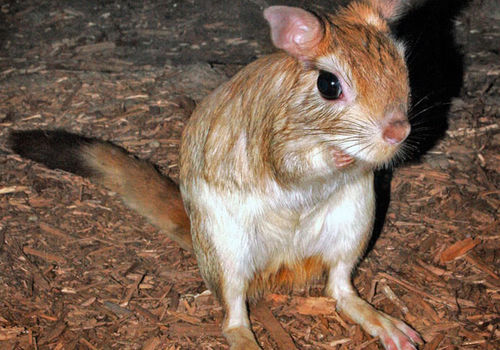
Springhaas
Pedetes capensisSpringhaas
Introduction: The name springhaas (Pedetes capensis) is derived from the bounds and hops on its powerful hind legs that propel it forward; its long tail acts as a balance. Although the name springhaas translates into English as springhare, this is an incorrect use as hares belong to the Leporidae family.
Springhaas are large rodents which resemble small kangaroos, with their short front legs, long, very powerful hind legs and long tail. They have short round heads, large eyes and long, narrow but erect roundly pointed ears. Their habitat must include compact sandy soil to dig their burrows and they generally avoid hard ground, mopane woodland, or heavy clay soils. This explains their patchy distribution.
They are nocturnal creatures and do not emerge from their burrows until well after dark, announcing their arrival sometimes with a high leap. At other times, they poke their noses out to test the air, their ears raised to listen for danger.
Distribution: Springhaas are widely distributed in Namibia although not so common in the coastal areas of the Namib Desert.
Diet: They are grazers living almost entirely on grass.
Colouring: The colour of the coat can vary from one area to another, but in general it is a cinnamon-buff and slightly darker on the head. The tail has a broad jet-black tip. The under parts are whitish, faintly yellow.
Breeding: A single young is born at almost any time of the year with a gestation period of around 60 days, born in burrows fully furred.
Size: Males have an overall length up to 90cm with a tail half this length and an average mass of around 3.kg. Females are slightly smaller in build.
Klein Windhoek

